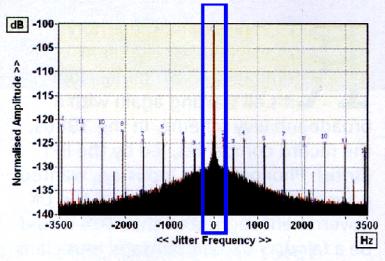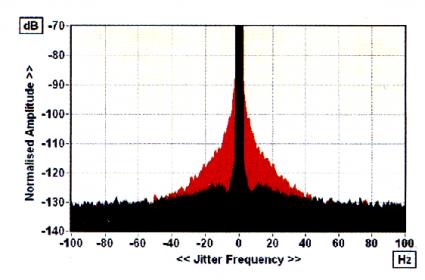Just Don (H = Herman, 50 = age I joined this wondrous forum).
Sorry, I was thinking of the masking effects of tones located close to a much larger signal. While close-in phase noise could also be masked, I am not sure its audibility, meaning I have not personally run a controlled test. Off the cuff, I would think by making the signals wander it could certainly introduce an annoying warble or beat to the sound. Have to be pretty large, though, at least IMO. The busier the signal, the less likely we'd be to notice, of course. But, it may be one of the many things noticeable by its absence. 0.1 Hz is 10-second pattern and I too find it very hard to believe such a long period would be noticeable.
I have no idea if the IQ test measures Allan variance, or even how important that would be. I need to read up more on the test but that will have to wait for the weekend.
We should ping Kal as I think he (and others, I am sure) have much deeper knowledge of psychoacoustics. Me, I am a simple country boy, a hairy-knuckled engineer, not a high-brow real science type. This is mostly over my head, I am trying to stick to what little I know of the actual circuits and such.
This is mostly over my head, I am trying to stick to what little I know of the actual circuits and such.
Sorry, I was thinking of the masking effects of tones located close to a much larger signal. While close-in phase noise could also be masked, I am not sure its audibility, meaning I have not personally run a controlled test. Off the cuff, I would think by making the signals wander it could certainly introduce an annoying warble or beat to the sound. Have to be pretty large, though, at least IMO. The busier the signal, the less likely we'd be to notice, of course. But, it may be one of the many things noticeable by its absence. 0.1 Hz is 10-second pattern and I too find it very hard to believe such a long period would be noticeable.
I have no idea if the IQ test measures Allan variance, or even how important that would be. I need to read up more on the test but that will have to wait for the weekend.
We should ping Kal as I think he (and others, I am sure) have much deeper knowledge of psychoacoustics. Me, I am a simple country boy, a hairy-knuckled engineer, not a high-brow real science type.



